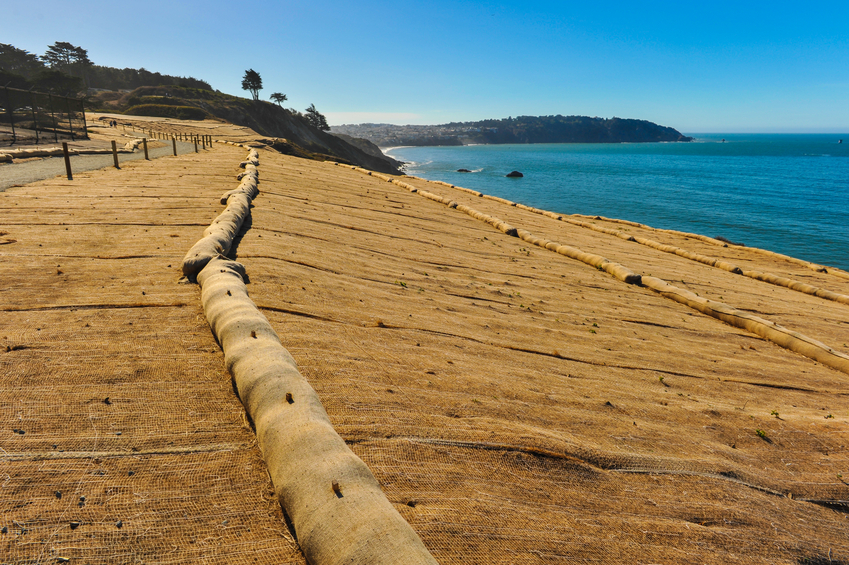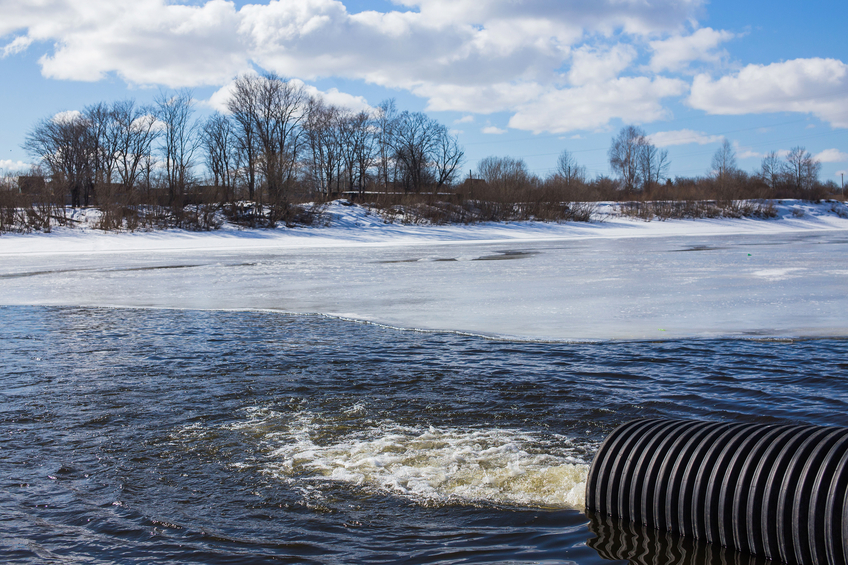Iowa Stormwater 10 PDH Discount Package 3
Developing Your Stormwater Pollution Prevention Plan (SWPPP) (C04-057)
Hydraulic Design of Storm Sewers Using Excel (C04-014)

This online engineering PDH course addresses EPA's BMP for improved quality of receiving water bodies, conservation of water resources, flood control and more.
Erosion and sedimentation related to construction site storm water runoff can significantly affect the aquatic population and hydraulic characteristics of the receiving waters. Alterations in hydraulic characteristics of streams receiving runoff include higher peak flow rates, increased frequency and duration of bankfull and subbankfull flows, increased occurrences of downstream flooding, and reduced baseflow levels.
EPA recognizes that such alterations can be prevented by implementing an effective storm water management program. Therefore the EPA published the Storm Water Phase II Rule on
This 2 PDH online course is applicable to municipality owners and/or operators, construction contractors/workers, site developers, engineers, managers, and all other personnel involved in the implementation of sediment control for storm water runoff from construction sites.
This PE continuing education course is intended to provide you with the following specific knowledge and skills:
- Types and methods of sediment control systems
- Applicability
- Siting and design criteria
- Maintenance and cost considerations
- Effectiveness and limitations
In this professional engineering CEU course, you need to review EPA’s Best Management Practice relating to the “Sediment Control” section of the “Construction Site Storm Water Runoff Control”. This section of the BMP addresses the following “Sediment Control” methods:
- Temporary Diversion Dikes
- Wind Fences and Sand Fences
- Brush Barrier
- Silt Fence
- Sediment Filters and Sediment Chambers
- Sediment Trap
- Strom Drain Inlet Protection
Once you complete your course review, you need to take a multiple-choice quiz consisting of fifteen (15) questions to earn 2 PDH credits. The quiz will be based on the “Sediment Control” section of this EPA publication.
Upon successful completion of the quiz, print your Certificate of Completion instantly. (Note: if you are paying by check or money order, you will be able to print it after we receive your payment.) For your convenience, we will also email it to you. Please note that you can log in to your account at any time to access and print your Certificate of Completion.

This online engineering PDH offers steps for planning how to prevent and contain stormwater pollution. It offers a step by step guide on what should be included in the plan, as well as helpful tips for how the plan can be maintained, adhered to, and exceeded in order to ensure a high level of quality.
Stormwater runoff is water from rain or snowmelt that does not immediately infiltrate into the ground and flows over or through natural or man-made storage or conveyance systems. When undeveloped areas are converted to land uses with impervious surfaces such as buildings, parking lots, and roads, the natural hydrology of the land is altered and can result in increased surface runoff rates, volumes, and pollutant loads.
This course provides useful tips about maintaining a SWPPP, as well as examples of and foresight into what can go wrong with various different kinds of materials which are commonly found at industrial sites. This includes solids, liquids, and waste. It also provides useful information on how to effectively and efficiently handle stormwater discharge in the event that control measures fail, and information on monitoring pollutants in stormwater discharge.
This 4 PDH online course is applicable to industrial, civil, environmental, and sustainability engineers as well as others interested in gaining a basic understanding about developing a stormwater pollution prevention plan.
This PE continuing education course is intended to provide you with the following specific knowledge and skills:
- Understanding what causes stormwater pollution and its effects on the environment
- Learning how to prevent and contain stormwater pollution
- Learning how to develop a stormwater pollution prevention plan in order to be in compliance with a National Pollutant Discharge Elimination System permit
- Learning how to analyze the particular pollutants in your stormwater discharge
Upon successful completion of the quiz, print your Certificate of Completion instantly. (Note: if you are paying by check or money order, you will be able to print it after we receive your payment.) For your convenience, we will also email it to you. Please note that you can log in to your account at any time to access and print your Certificate of Completion.

This online enineering PDH course explains how to derive the pipe diameter and slope for each length of storm sewer and the depth to the pipe bottom at each manhole.The overall procedure and each step will be presented and discussed. Example calculations for a single length of storm sewer between two manholes will be performed and an example of calculations between successive manholes will be done using Excel.
Storm sewers are widely used to carry away runoff from storms, primarily in urban areas. The hydraulic design begins after the locations of the manholes for the system have been determined. Between each pair of manholes the storm sewer will have a constant slope and diameter. The hydraulic design process results in determination of an appropriate diameter and slope for each length of storm sewer and determines the depth of the bottom of the pipe at each manhole.
This 4 PDH online course is intended for hydrologists, civil engineers, hydraulic engineers, highway engineers and environmental engineers. After completing this course, you will be able to carry out hydraulic design of storm sewers to determine diameter, slope and depth of invert at each manhole for the length of storm sewer between two successive manholes. After completing this course, you will also be able to set up an Excel program to carry out hydraulic design for successive lengths of storm sewer.
This PE continuing education course is intended to provide you with the following specific knowledge and skills:
- Be able to determine the value for runoff coefficient for a drainage area with known land use, SCS soil group, and approximate surface slope.
- Be able to find the rainfall intensity for specified storm duration and return period at a specified location if given an I-D-F table or graph for that location.
- Be able to estimate the overland flow travel time for a drainage area using the Manning Kinetic Equation.
- Be able to estimate channel flow travel time using Manning's Open Channel Flow Equation.
- Be able to estimate peak runoff rate from a drainage area using the Rational Method.
- Be able to use Method I and Method II as outlined in this course to calculate design diameter and slope for a length of storm sewer between two successive manholes.
- Be able to determine the velocity and flow rate in a circular pipe flowing partially full if enough information is available to calculate the full pipe velocity and flow rate.
- Be able to put together the above skills to carry out the overall hydraulic design of a length of storm sewer between two successive manholes.
- Be able to use Excel to make storm sewer hydraulic design calculations for lengths of storm sewer between successive manholes.
In this professional engineering CEU course, you need to review the course document titled, "Hydraulic Design of Storm Sewers Using Excel". In addition, you need to review the Excel spreadsheet titled, "Storm Sewer Hydraulic Design_US units".
Storm Sewer Hydraulic Design_US units (77 KB)
Upon successful completion of the quiz, print your Certificate of Completion instantly. (Note: if you are paying by check or money order, you will be able to print it after we receive your payment.) For your convenience, we will also email it to you. Please note that you can log in to your account at any time to access and print your Certificate of Completion.